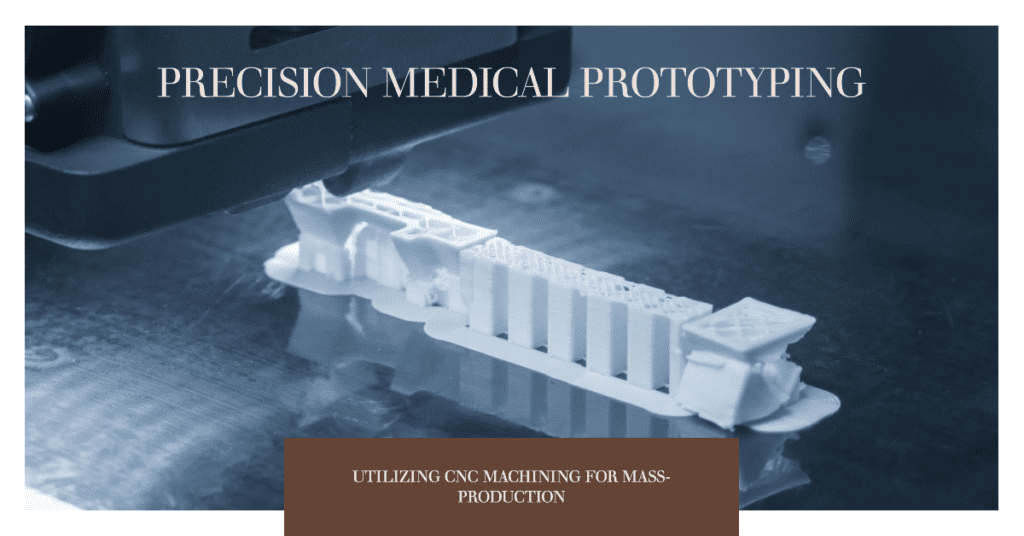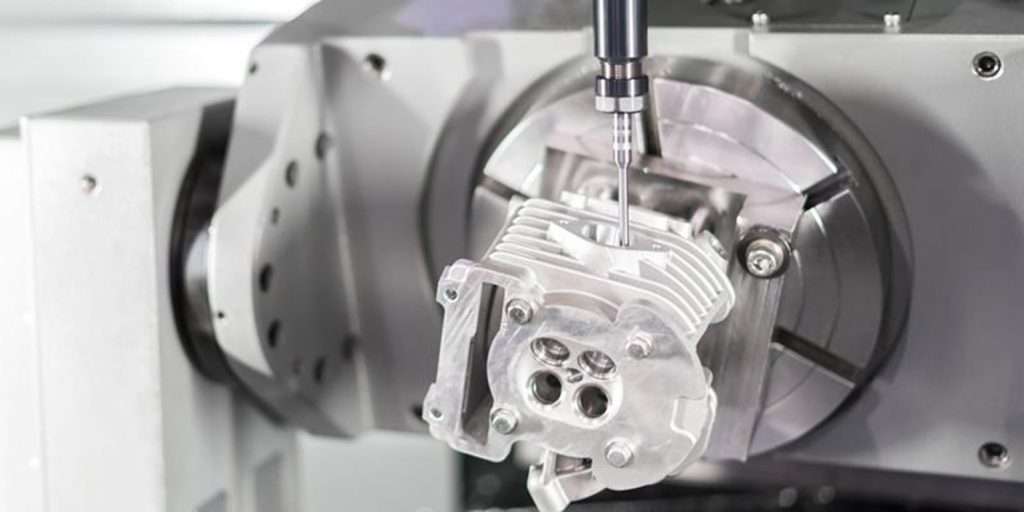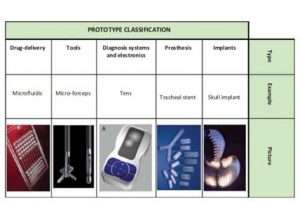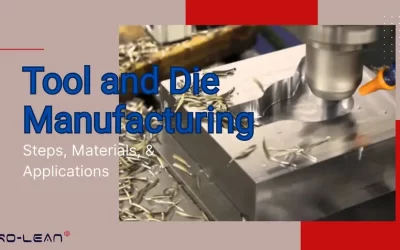
The medical industry is becoming more efficient and sophisticated with the advancement in manufacturing. Automation and precise manufacturing have been a significant part of developing new equipment, technologies, accessories, and surgical instruments. Several manufacturing technologies, such as CNC machining, injection molding, casting, and 3D printing, are used for these applications.
 However, CNC machining is the most popular manufacturing approach in medical prototyping and large-scale production. It is a quick way to create precise functional medical prototypes, parts, and products. Different versatile CNC machining operations allow the creation of intricate shapes, features, profiles, and surfaces with various material options.
However, CNC machining is the most popular manufacturing approach in medical prototyping and large-scale production. It is a quick way to create precise functional medical prototypes, parts, and products. Different versatile CNC machining operations allow the creation of intricate shapes, features, profiles, and surfaces with various material options.
This article will discuss material selection for medical products, the importance of CNC machining in medical prototyping & mass production, and its applications.
What is CNC machining?

Aluminum prototype machining
CNC machining is a popular method of producing complex, high-precision parts and products in various industries, including medical. The process involves using computer-controlled machines, such as CNC mills and lathes, to manufacture parts and products to tight tolerances and exacting specifications.
Different CNC machining operations are used in medical prototyping and production based on requirements and design specifications.
-
- Milling
- Turning
- Drilling
- Broaching
- Threading
- Reaming
- Micro-machining, and many more,
Material Selection for Medical Applications
CNC machining can work with an extensive range of materials, from metal & alloys to ceramics. Even yet, there are some requirements for medical equipment and devices. Depending on the specific use of parts or products, the material must be bio-compatible or recognized as medical-grade.
The lab equipment and other accessories have more flexibility in terms of material options. In comparison, surgical device and implant materials are strictly regulated by authorized organizations worldwide. For example, the Food and Drug Administration and the Center for Devices and Radiological Health (CDRH) regulate surgical items and implants in the United States.
The following are common materials used in CNC machining projects for the prototyping and mass production of medical devices, equipment, and accessories.
| Material | Description |
|
Stainless steel |
It is a popular material for medical applications due to its high strength, durability, corrosion resistance, and biocompatibility. For instance, 316L stainless steel is used as a metallic biomaterial for orthopedic implants, such as artificial joints, bone plates, screws, and nails (Nahid SultanAl-MamunaK, 2020). |
| Titanium | Titanium is a high-strength, low-weight, and biocompatible material. It is used for various medical devices and implants, including spinal implants, joint replacements, and dental implants. |
|
Cobalt-chrome |
It is an alloy that combines cobalt and chromium with other metals, such as molybdenum or tungsten. This combination creates a highly resistant material to wear and corrosion, making it ideal for medical devices that must withstand the harsh environments of the human body. |
|
PEEK |
It is a high-performance thermoplastic that is also strong, durable, and biocompatible. It is commonly used for spinal implants, surgical instruments, and orthopedic devices. Additionally, PEEK is also radiolucent, meaning it does not interfere with medical imaging equipment such as X-rays and MRI scans. |
|
Nylon |
Nylon is also a low-cost thermoplastic compared to other medical-grade polymers, making it a popular choice for medical devices and implants in prototyping and mass production. It is vital, biocompatible, lightweight, and flexible. |
|
Medical-Grade Acrylic
|
It is popular in CNC machining for medical devices, surgical instruments, and a few implants because of its transparency, strength, and biocompatibility. One of the key advantages is that transparency makes it ideal for medical devices that require visual access to the inside of the body, such as endoscopes and catheter tubing. |
Several other materials, including bio ceramics, medical-grade polycarbonate, PTFE, FEP, and more, can be processed with CNC prototype machining for medical application equipment, surgical instruments, and implants.
Importance of CNC Machining in Medical Prototyping and Mass Production
The following are the key reasons why CNC machining is crucial for medical prototyping and mass Production.
I. Precision machining
Precision is crucial in medical prototyping and mass production because even minor deviations in size, shape, or surface finish can have severe implications for the function and safety of medical devices and implants.
CNC machining provides precision prototyping machining ability that allows precise control over the production process, ensuring that parts are produced with dimensional accuracy to tight tolerances. It can maintain a tolerance of ±.005″, even in the micro-machining procedures.
The machines use computer-controlled tools and cutting paths, allowing for repeatable, consistent results with minimal human intervention. This is especially important in medical applications where the parts must meet strict specifications and function adequately.
II.Complex shapes and geometries
Complex geometries in medical devices and implants are standard because they allow for better fit, function, and performance within the human body. CNC machining is well-suited for producing complex geometries because it provides precise control over the cutting tools and paths. It can create medical devices and implants that meet the unique and demanding requirements of the medical field.
III.Quick lead time
Production speed, including medical devices and implants, is essential to any manufacturing project. Prototyping requires a quick lead to test, improve, and validate the design concepts. This helps to identify potential issues early in the development process and make necessary changes before mass production, reducing costs and improving the final product.
CNC machining is well-suited for producing parts quickly because the machines can run 24/7, with minimal downtime, and they can produce parts in large quantities with consistent accuracy and repeatability. By reducing the time needed for setup and changeover between various aspects, computer-controlled tools and cutting pathways also contribute to faster production.
IV.Dimensional consistency and repeatability.
Repeatability refers to the ability to produce identical parts or components consistently. In medical prototyping and mass production, dimensional consistency and repeatability are crucial because they ensure that each part of the production run meets the exact specifications.
CNC machining offers exceptional repeatability because computer control and automation require minimal human intervention. This is especially important in medical applications where parts must meet strict requirements and specifications. The repeatability ensures the safety and efficacy of medical devices and implants.
V.Material compatibility
Material compatibility is crucial in medical applications because medical devices and implants must be made from materials that are safe for use within the human body and can withstand the demands of medical procedures.
CNC machining can work with various materials, including metals, plastics, and composites. This versatility makes CNC machining well-suited for medical applications, where different materials may be required for other parts or components of a device.
VI.Cost-effectiveness
In medical mass production, cost-effectiveness is essential in rapid prototyping and mass production because it ensures that medical devices and implants are affordable for patients and healthcare providers.
CNC machining is a cost-effective process, especially in prototyping. Other manufacturing approaches require the fabrication of custom dies to manufacture parts and products, which can add a high cost (per item) if you are producing on a small scale. CNC machining is also inexpensive in mass production because of its efficiency, automation, and consistent quality.
Try Prolean Now!
How does CNC Machining Offers Design Freedom and Manufacturing Flexibility?
In traditional manufacturing processes such as machining or molding, design choices could be limited by the capabilities of the manufacturing process and the need to consider the ease of manufacturing. Nevertheless, CNC machining can convert any innovative and complex design into reality without being restricted by manufacturing constraints.
This increased design freedom allows for new features, complex shapes, internal geometries, and intricate details, improving the functionality and performance of medical devices and implants. In fact, design freedom has the potential to revolutionize the medical device industry by enabling the creation of devices and implants that are better suited to the unique needs of patients and healthcare providers.

Different medical devices &parts are created with CNC.
Customization is one of the most significant advantages of CNC machining in medical applications. It can be used to produce customized medical devices, surgical instruments, and implants tailored to patients’ individual needs. This added flexibility allows manufacturers to adapt to the unique needs of patients and healthcare providers for better outcomes.
Applications of CNC Machining in Medical Prototyping &Mass Production.

R&D scope in different CNC prototypes (Ciurana, 2014)
CNC machining plays a critical role in the medical industry, providing the precision, accuracy, and consistency required to produce high-quality medical devices and implants, and prototypes for new custom products.
Following are the major applications in medical Prototyping and mass Production.
| Surgical instruments | Scalpels, forceps, retractors, needle holders, scissors, chisels, osteotomes, drill bits, trocars, Kerrison punches, rongeurs, and curettes |
|
Medical devices and implants |
Orthopedic plates & screws, spinal fixation devices, hip joint replacements, cranial fixation devices, arthroscopy instruments, heart valves, stents, drug delivery devices, pacemakers, cardiac catheterization devices, neurostimulation devices, endoscopic instruments, and many more. |
| Dental implants | Crowns, bridges, dentures, inlays, onlays, veneers, abutments, implant-supported dentures & bridges, and root canal posts. |
| Research and development | CNC machining is used in the research and development of new medical devices and implants, allowing manufacturers to prototype and test new designs before mass production quickly. |
Summing Up
CNC machining has proven to be a crucial aspect of medical prototyping and mass production. With precise computer-controlled operations and versatile material options, CNC machining provides medical industries with high-quality and functional medical devices, equipment, and implants. The medical sector can rely on CNC machining to ensure precision, safety, and reliability, which is essential for producing life-saving medical products.
ProleanTech is a dedicated manufacturing company with all capabilities and experience in rapid prototyping services and manufacturing solutions for the medical industry. We have experienced engineers, highly skilled operators, and advanced automated multi-axis CNC machines to create precise medical devices, surgical instruments, and implants. You can upload your design to request a quote if you want any CNC machining service for your medical-related parts, products, and prototypes.
FAQ’s
What materials are used in CNC machining for medical applications?
The common materials used in CNC machining for medical applications include stainless steel, titanium, cobalt-chrome, PEEK, nylon, medical-grade acrylic, bioceramics, medical-grade polycarbonate, PTFE, FEP, and more.
Why is precision necessary in medical prototyping and mass production?
Precision is crucial in medical prototyping and mass production because slight deviations in size, shape, or surface quality can significantly affect the functionality and safety of medical devices and implants.
Why is CNC machining popular in medical prototyping and mass production?
CNC machining is widespread in medical prototyping and mass production because it allows for rapidly creating precise functional medical prototypes, parts, and products. Different versatile CNC machining operations also enable the creation of intricate shapes, features, profiles, and surfaces with various material options.
References
- Ciurana, J. (2014). Designing, prototyping, and manufacturing medical devices: An overview. International Journal of Computer Integrated Manufacturing.
- Nahid SultanAl-MamunaK, s. D. (2020). Corrosion behavior and biocompatibility of additively manufactured 316L stainless steel in a physiological environment: the effect of citrate ions. Additive Manufacturing.




0 Comments